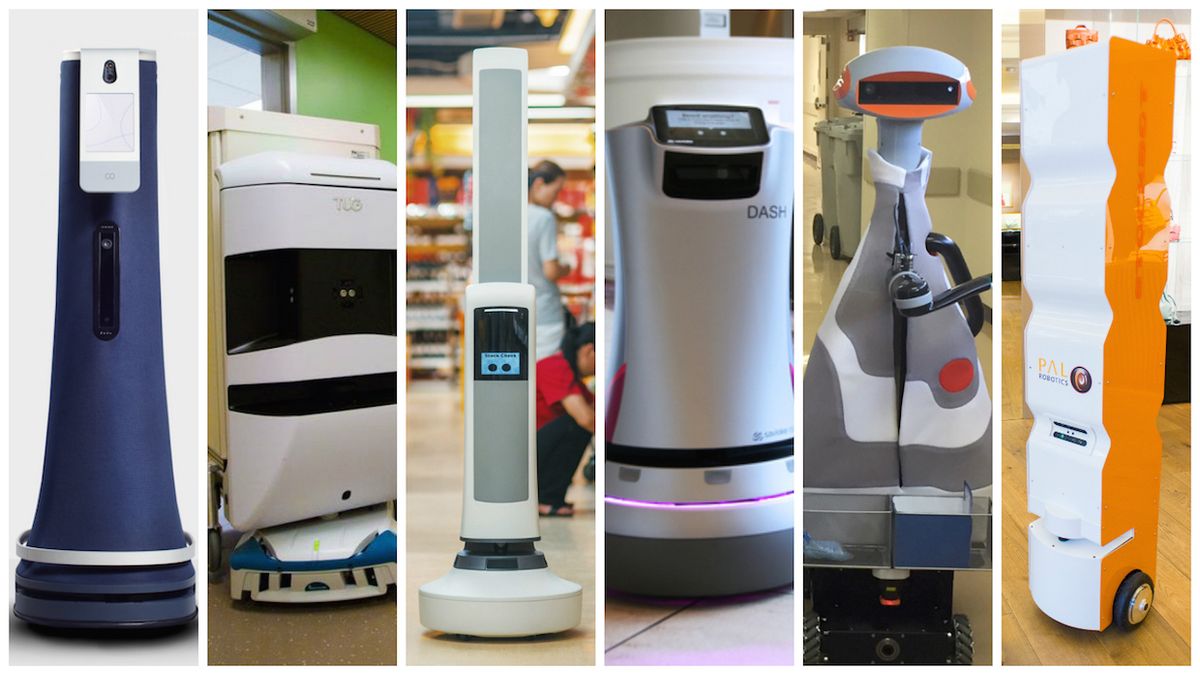This is a guest post. The views expressed here are solely those of the author and do not represent positions of IEEE Spectrum or the IEEE.

Venture funding for robotics has exploded by more than 10x over the last six years and shows no signs of stopping. Most of this investment has been focused on the usual suspects: logistics, warehouse automation, robot arms for manufacturing, healthcare and surgical robots, drones, agriculture, and autonomous cars.
But after looking into the robotics industry as I set out to launch my own robot company, Cobalt, founded last year and which came out of stealth today, I became convinced that there is a new emerging segment about to become one of the fastest-growing in coming years: Autonomous indoor robots for commercial spaces.
For many years, “autonomous indoor robots” meant one of two domains: 1. Manufacturing or material handling robots in factories and warehouses; or 2. Simple home robots. These robots sit on opposite ends of the “structured spaces” spectrum:

In years past, robots in factories and warehouses required extremely structured environments—essentially, automation engineers modified the environment and kept people at arm’s length so that the robots could perform repetitive tasks in relative isolation. With advances in compliant manipulation (e.g. Rethink Robotics and Universal Robots) and mapping (e.g. Fetch Robotics), this equation is slowly changing…but that’s a story for another day.
On the opposite end of the “structured spaces” spectrum is the home. Homes are notoriously unstructured and dynamic. Homes can change moment to moment and they have extremely high variability, lots of people (adults and children alike), pets, clutter, stairs, and unreliable communications. Of course, we’d all love to have a general-purpose home robot (i.e. Rosie from “The Jetsons”) to clean, do the laundry, feed the pets, etc. But it’s pretty obvious that inexpensive appliances (like Roomba) and robot toys (look at CES this year) are the only viable home robots at this time: The home is hard!
But there’s a massive, untapped market that sits between these two on the spectrum: Commercial spaces such as hotels, hospitals, offices, retail stores, banks, schools, nursing homes, schools, malls, and museums.
Commercial spaces could serve as a great stepping stone on the path toward general-purpose home robots by driving scale, volume, and capabilities. Commercial spaces have a number of key advantages compared to the home:
- Commercial spaces and the businesses therein account for a massive portion of the economy; they have real problems and real budgets to spend on solutions. In short: Robots in this space offer an appealing and quantifiable value proposition. If we compare this to home robots, which compete for limited consumer discretionary spending and often have cloudy value propositions (entertainment?), it’s easy to see why commercial robots are starting to take off.
- Commercial spaces are required by law to meet stringent building codes, such as Americans With Disabilities Act (ADA) compliance. These codes provide concrete specifications for things such as doorways, thresholds, ramps, elevators, passageways, signage, and so forth, which vastly simplifies the job for mechanical engineers. In essence: If commercial spaces are required to accommodate electric wheelchairs, then we already have a “proof of feasibility” and baseline for designing our robots.
- Most commercial spaces have reliable and predictable communications infrastructure (e.g. Wi-Fi and cellular connectivity), since it’s required for normal business operation. This means that robots can maintain a constant connection to the cloud for data transfer or to support human-in-the-loop controls. This latter point shouldn’t be underestimated: The last 1 percent of autonomy is really, really hard—just look at autonomous cars! By designing the applications to support occasional remote human interventions, we can “bootstrap” applications today while algorithms and sensors improve.
Owing to these factors, we’ve started to see a number of autonomous indoor robots for commercial spaces popping up in the last few years. To name just a few:

In fact, each of these companies is building what amounts to an autonomous car, but with different form-factors, value propositions, and customer segments. So while billions of dollars are being spent on autonomous vehicles for R&D and production at scale, these new applications reap the benefits (tech advances and cost savings) on sensors, computing hardware, algorithms, AI, machine learning, and open-source software.
However, indoor robots present some of their own unique challenges. Unlike autonomous cars, indoor robots are required to interact closely with and around people and integrate seamlessly into brand-conscious enterprise organizations. Because of this, factors such as industrial design, human-robot interaction, and psychology become increasingly important. Therefore, it is increasingly important for companies in this new market segment to engage experts in these fields early on (that was certainly the case at Cobalt).
I’m excited about the prospect for this new market segment. These companies are eschewing the classic roboticist temptation to “building sexy robots for the sake of robots.” Instead, they are solving real, diverse problems with real, paying customers. Many, if not most, of the companies mentioned are already starting to deliver robots in the field, so keep an eye out for them. If my intuition is correct, there will be a lot of these robots very soon!
Dr. Travis Deyle is the cofounder and CEO of Cobalt, which builds indoor robots for security designed to work alongside human guards. He formerly worked at Google X Life Sciences and holds a Ph.D. in robotics from Georgia Tech’s Healthcare Robotics Lab.
Travis Deyle is the cofounder and CEO of Cobalt, which builds indoor robots for security designed to work alongside human guards. He formerly worked at Google X Life Sciences and holds a Ph.D. in robotics from Georgia Tech’s Healthcare Robotics Lab.



